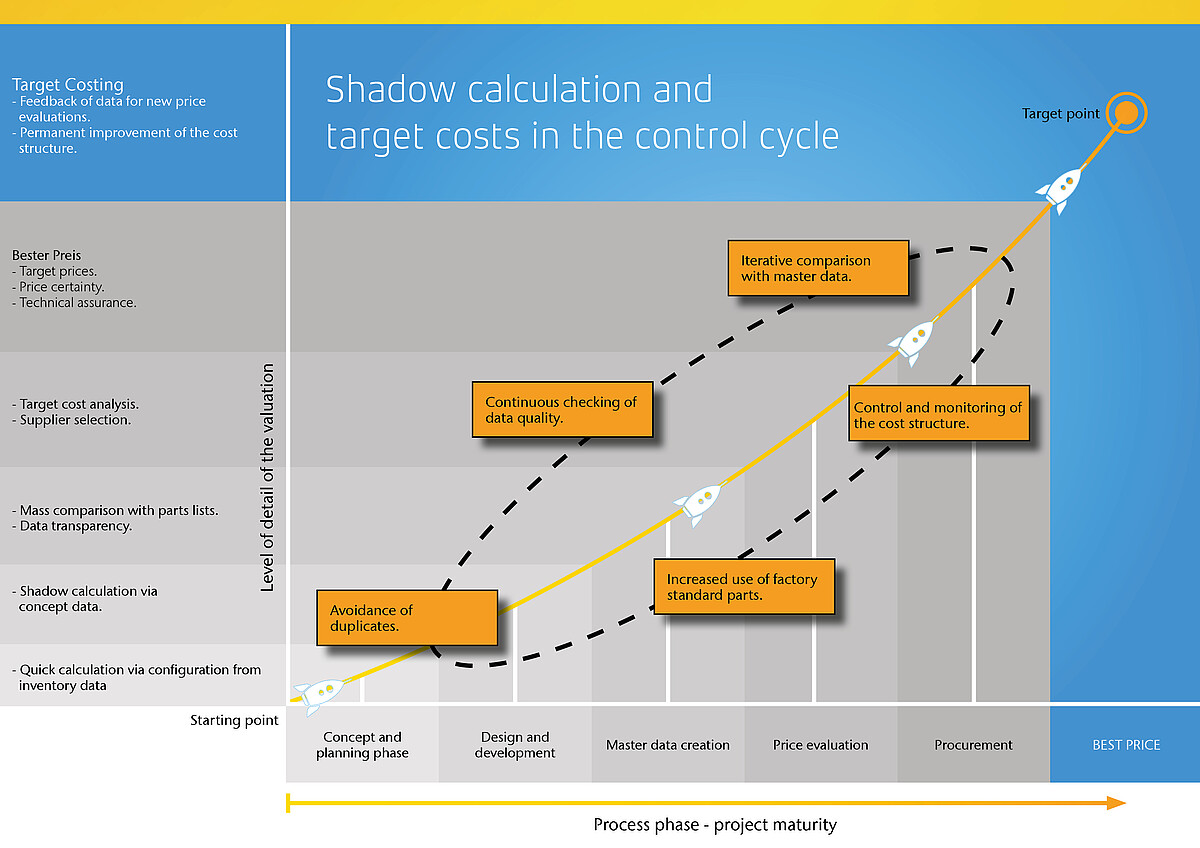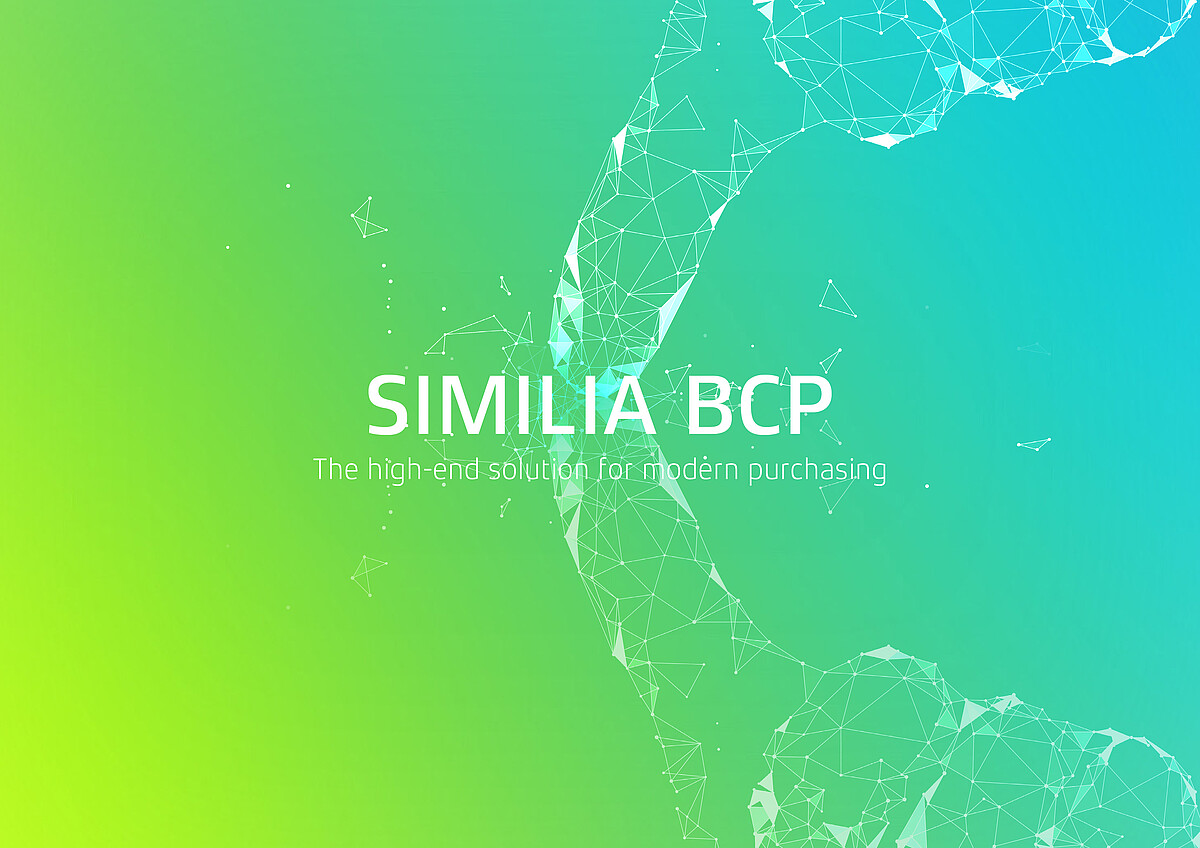Target Costing
Target costing is a method from the field of market-oriented target cost management. It is already used in the early phase of product development or project planning.
With the help of target costing, articles, products, components and plants are to be developed or procured in compliance with allowed costs (target costs). The defined functional and quality characteristics are to be met.
Consequently, this process of target costing should start as early as possible. It is therefore not to be assigned exclusively in the area of purchasing. Design-to-cost is a component of target costing. This is intended to ensure that cost-conscious product development is aimed for at an early stage.
Read more: Optimizing procurement processes.
Expand and secure competitiveness
What should an item or product cost? What do comparable items or products cost? Does it make sense to produce the items or products yourself or to buy them? How high should the company's own contribution be? How can these constraints be reconciled while maintaining costs, quality and deadlines? A large part of these questions ends up with the purchasing department. Purchasing is confronted with this on a daily basis and faces a special challenge. It has to reconcile the technical requirements with the commercial constraints (costs) in the best possible way.
Thus, the goal of target costing is primarily to realize a cost-oriented control of business processes. This includes sales - calculation - project planning - development - purchasing - work preparation and production - logistics - maintenance and service. In this way, the competitiveness of the company is to be increased and secured in the long term.
The basic procedure of target costing is based on firstly analyzing customer requirements in the early phase of product development in order to determine what the customer is willing to pay for a product. The target costs are then determined on the basis of the available capacities and technical resources. Consequently, the implementation of target costing aims to reduce the total costs in the process chain: sales - project planning - development - production - procurement - assembly - transport and logistics - service and maintenance.
SIMILIA for purchasing and procurement: Learn more.
Target Costing means systematic approach
The process of target costing can be divided into several systematic steps.
It starts with the elaboration of the product design followed by the target cost determination. This target cost determination (target costing) takes into account, on the one hand, the absolute minimum costs, and also the costs that can be achieved for this product on the market. What is the customer willing to pay for this product?
Purchasing is ultimately about buying the individual components for this product at the best conditions. Target achievement in the sense of target costing is the overriding goal. From this perspective, purchasing takes on a special key role. Purchasing makes a significant contribution to achieving or even exceeding the targets. If purchasing is enabled by modern methods to differentiate and evaluate its article inventory and master data and to make a clear allocation with suppliers, it can achieve the best prices.
At this point, there is clear potential to support procurement processes with the help of modern IT methods. The user does not have to be an IT specialist today. He can concentrate more on his core competencies using these methods. Important preparations for his work are made automatically. These preparations include fully automated data comparisons in the existing master data records. After all, considerable savings can already be realized from a continuous analysis of the IST inventory. The special feature of these processes is that they automatically check the inventory data record without manual interaction, and identify as well as flag errors. As a result, excessive prices from different suppliers can be avoided. The user also gains more price certainty and can even increase the proportion of default prices after a certain period of time. The daily revolving check of this data increases the quality level of the data and thus ensures a sustainable improvement and optimization of the business processes.
Here you will find the appropriate downloads.
This requires an essential capability: It must be ensured at all times that procurement processes are always carried out in compliance with the target costs (target costing). In practice, this is certainly not always possible. But if IT processes are used to support this point, as described above, the probability of achieving target costs is very high.
Enable purchasing with powerful methods
The goal is to assign a price to the individual components of products and services that customers are willing to pay. This value is specified as the target for the costs that may be caused by the provision of the product function.
Target costing is based on the question: What can a product cost so that it exactly meets the customer's requirements? In the development of new products, for example, the maximum competitive target price that a product may cost is specified. Furthermore, the target costs are also determined, which, after deducting the profit margin, represent the product costs allowed by the market (allowable costs).
Conventional procedures only allow you to have a quick and systematic overview of the entire item inventory to a limited extent. However, automated data reconciliation can be very useful in every phase. For example, shadow costing can be implemented in the early concept phase. This is helpful for automatically recording manufacturing costs and marketable sales prices for designed products and items.



